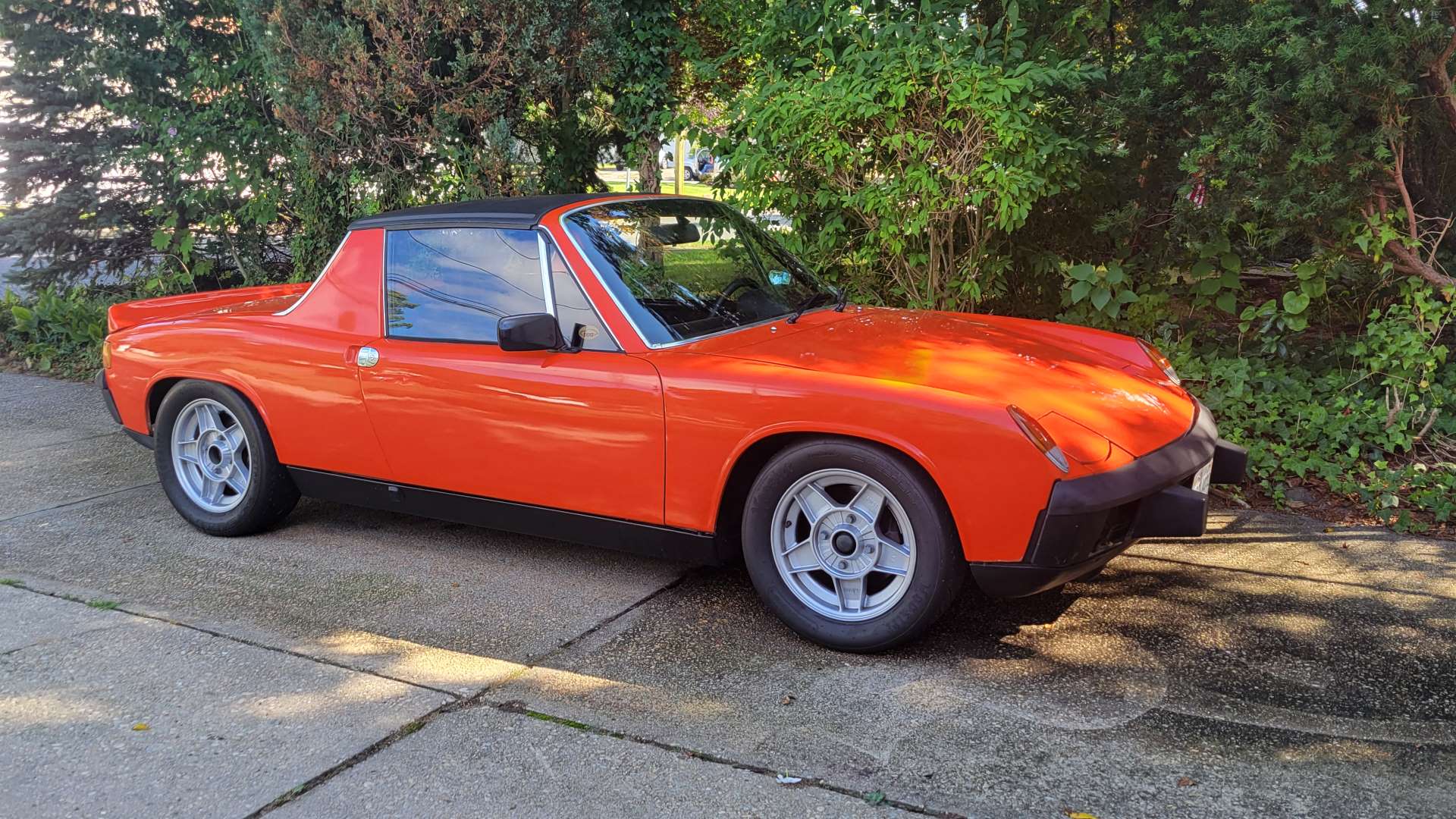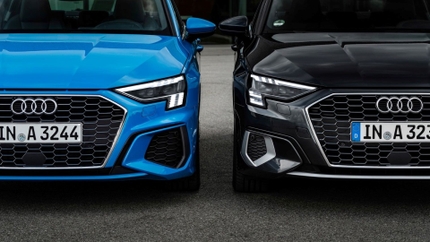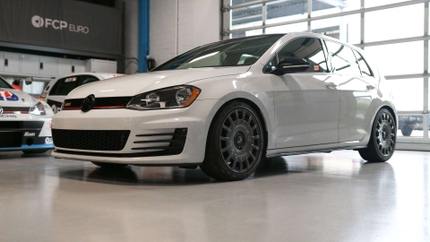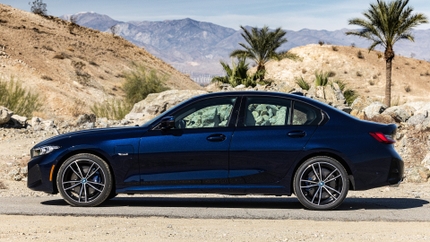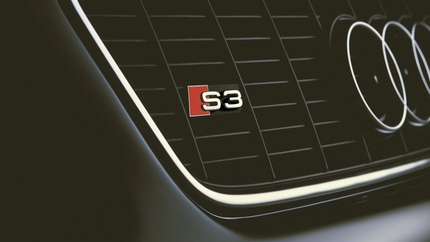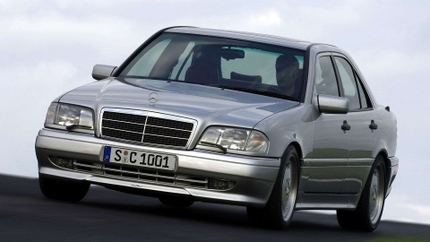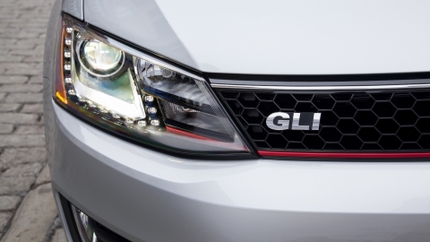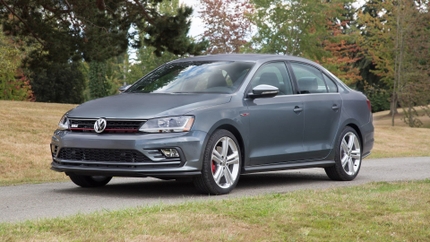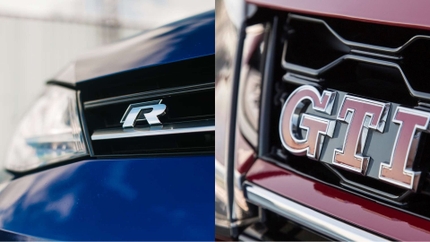- 04/14/2023
- 7 Min Read
- By: Christian Schaefer
The Definitive Guide To Mk6 Volkswagen Jetta GLI Brakes
The Mk6 Volkswagen Jetta GLI shares several parts with other high-performance VWs built on the PQ35 and MQB platforms. The standard components are reliable and tested designs that have been developed over years of GTI and GLI evolution. They also give the GLI excellent braking performance right out of the box and an easy-to-follow upgrade path that doesn’t require braking the bank.
Mk6 Jetta GLI Brake Guide Table of Contents |
Mk6 Volkswagen GLI Brake Specifications
During production, the Mk6 GLI had one small change to its braking system but otherwise remained consistent. The front brakes use a single-piston sliding caliper over a 312mm vented front rotor. The rotor uses a blank face and one-piece steel construction. The rear brakes also use a single-piston sliding caliper but clamp down over a non-vented rotor. Rear rotor sizing depends on the model year; 272mm for the 2012-2013 models and 253mm for 2014-2018. Both front and rear calipers are painted red.
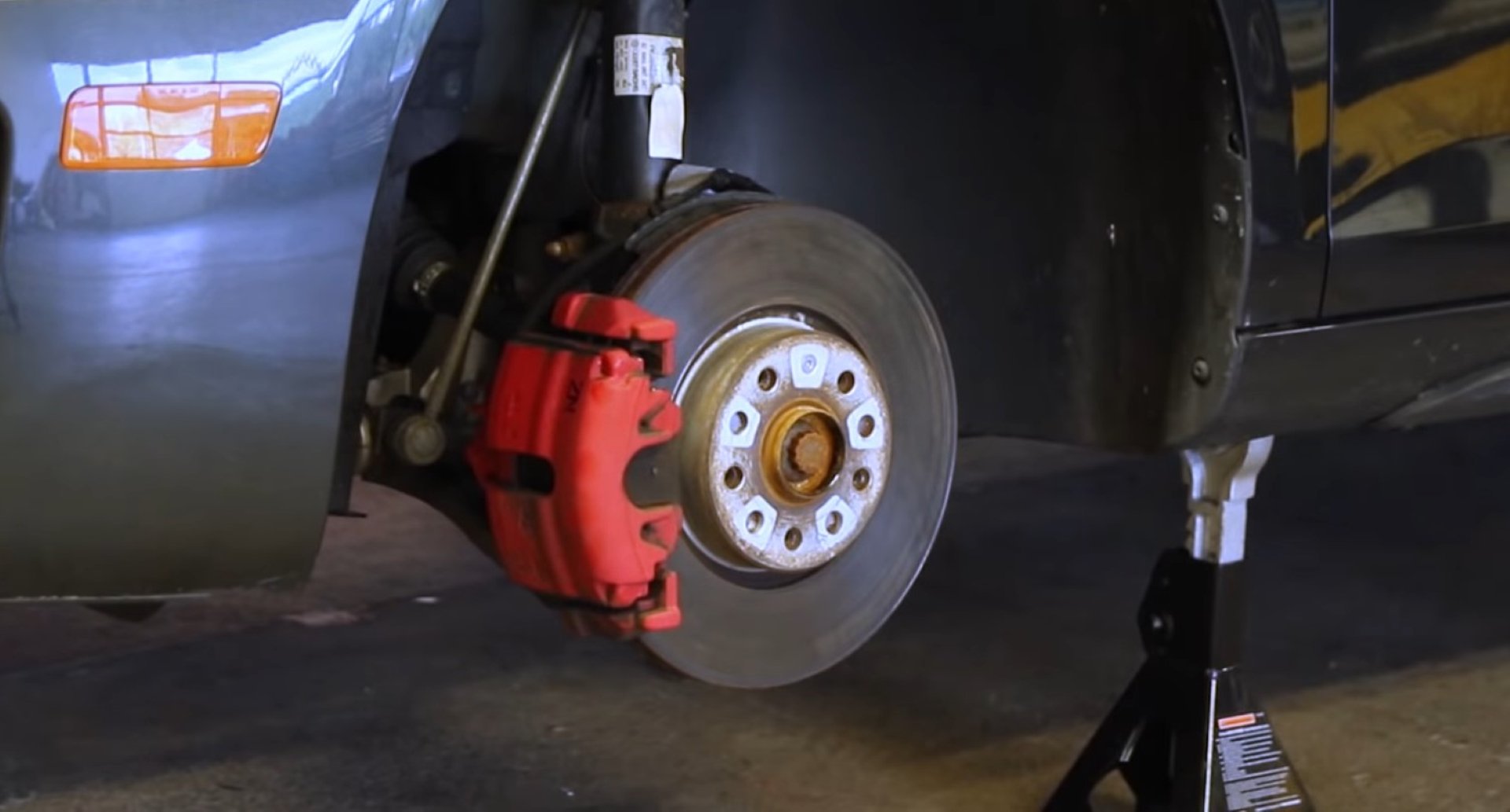
Front Brakes
- Caliper Type: Sliding
- Color: Red
- Piston count: 1
- Piston size (Front): 36mm & 40mm
- Composition: Semi-Metallic
- New Thickness: 12.0mm Front
- Replacement Thickness: 3.0mm Front
- Size and Type: 312mm, Vented
- Material: Steel
- New Thickness: 14.0mm
- Replacement Thickness: 2.0mm
Rear Brakes
- Caliper Type: Sliding
- Color: Red
- Piston count: 1
- Piston size:
- Composition: Semi-Metallic
- New Thickness: 12.0mm
- Replacement Thickness: 2.0mm
2012-2013 Rear Rotors
- Size and Type: 272mm, Solid
- Material: Steel
- New Thickness: 11.0mm
- Replacement Thickness: 10.0mm
2014-2018 Rear Rotors
- Size and Type: 253mm, Solid
- Material: Steel
- New Thickness: 11.0mm
- Replacement Thickness: 10.0mm
Mk6 VW GLI Brake Service & Repair
The GLI’s brakes will wear like any other car on the road; it’s inevitable. Just how quickly that happens will be down to you and your driving habits. The harder you drive the car, the quicker you’ll run through a set of brakes. That’s not a bad thing, though; you’ll then have the chance to do some maintenance yourself. Brake services are very straightforward and help develop your wrenching confidence.
Determining when to service your brakes can be done in a few ways, but it’s certainly easiest to let the car tell you. A brake pad wear sensor is fitted to one of the front brake pads on all GLI models. Once the pad wears to a specific point, the sensor rubs against the disc and wears through a small electrical connection, tripping a warning message on the dashboard. At that point, you’ll still have pad material to use for a thousand miles or so. Your best bet is to order your brake components once the sensor is tripped and then replace them at your next available convenience.
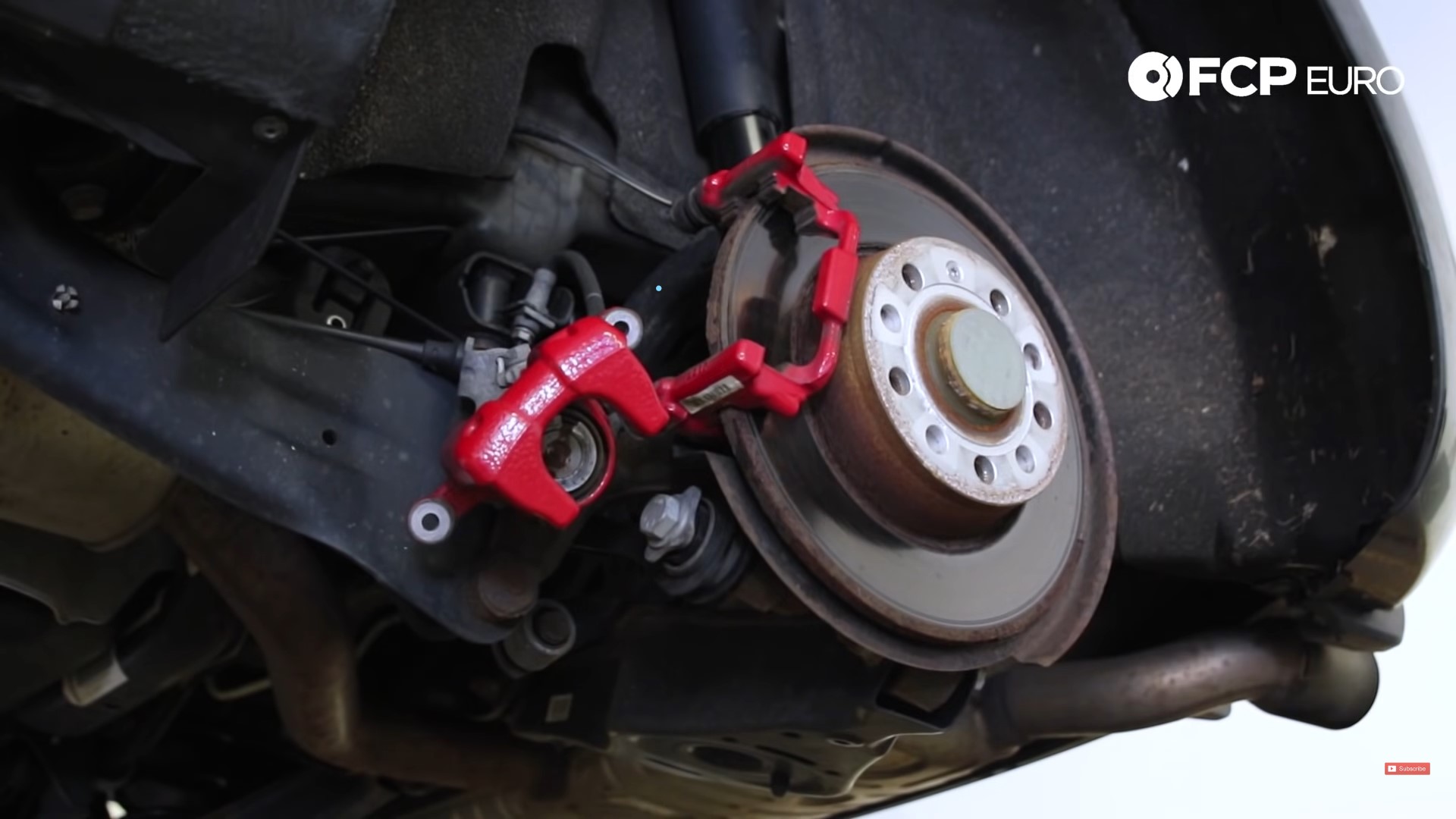
Instead of waiting for the sensor to be tripped, you can always just peer through your wheels and examine the remaining pad life yourself. A fresh set of pads has about 12mm of friction material, and VW calls for a replacement when that drops to about 2mm. You never have to wait until the pads get that thin for replacement, though you’d be wasting useable material. Leaving worn pads in for too long after the sensor was tripped can result in the brake pad’s metal backing plate becoming the new friction material. Don’t drive anywhere if that happens. The metal backing plate has no car-stopping properties and will seriously reduce your braking performance, not to mention destroy the discs and send fine bits of steel everywhere. That steel will cover your wheels and eventually rust if left sitting.
Judging when it’s time to replace the discs is a little trickier than the pads. Where pads wear substantially over time, discs are typically far more durable. The GLI’s acceptable wear depth is around 2-3mm for both the front and rear discs. While that doesn’t sound like much, they should last through at least two sets of OE-type pads before reaching replacement. Examine the rotors’ surface to get a general idea of their remaining lifespan, as it’s tough to measure the disc wear without removing the wheels. The most notable identifier will be a large lip around the disc’s edge, as pads generally avoid a rotor’s outer edge.
In extreme cases, the disc will let you know it’s time for replacement through aggressive shaking or juddering under braking. Those conditions happen after you warp a disc through excessive heat, improper brake pad bedding, or, occasionally, general use. A warped rotor isn’t an immediate call for replacement; you can still drive with them. However, it’ll be an annoying reminder of your brake’s condition every time you drive.
Looking after your brake lines and fluid is much more simple. Brake lines are made of rubber and can break, but only if they’ve been affected by some outside source. The only time you’ll likely have to work intimately with them is if you’re replacing the OE pieces with aftermarket braided lines. Brake fluid is generally nothing you ever have to look at. It should be a very pale blue-ish or amber color at all times. If darkened, you have an issue somewhere, and you should check for leaking fluid. With that said, you’ll need to flush the braking system every two years or so. Brake fluid is hygroscopic, so it absorbs water out of the air. That water will reduce the brake fluid’s boiling point and hurt repeated braking.
Lastly, you may experience some faint squealing under certain conditions. That’s relatively normal for a braking system, especially on a high-performance model. General dirt and debris on the rotor’s or pad’s surface and pad material embedded in the rotor’s face can induce noise. The noise isn’t a performance issue, and your brakes will continue to function as designed, but we can’t guarantee it won’t annoy you. You can remove your pads and lubricate the ears that hold them into the caliper for a fix, but that doesn’t always work. Otherwise, you can try to re-bed your pads. In theory, it’ll redistribute an even layer of pad material onto the disc’s friction surface, but the results are dependent on the disc’s condition.
Mk6 VW GLI OE & OEM Brake Alternatives
Taking your GLI to the dealership for service ensures that Genuine VW parts are installed. However, those parts can be pretty pricey, specifically because VW’s name is on them. If you don’t mind logo-less parts but are still looking for the quality and specification of the originals, you’ll want to browse through the OE and OEM offerings. Both OE and OEM parts are made to the exact standard of the Genuine parts, and in some cases, they’re identical to the Genuine stuff, but they won’t carry the hefty Genuine markup.
There are several quality brake disc choices to choose from beyond Genuine parts. Pagid, Zimmerman, and Ate all offer exact replacements for the original discs. Ate is the OE choice, producing the discs Volkswagen uses for their Genuine parts. Pagid is the OEM, making other standard parts for the GLI but not the rotors. The Zimmermann rotors, while not OEM, will work just as well on a GLI as the other two. We used off-the-shelf Zimmermann rotors on the rear of our TCR VW GTI race car during our championship run. If they can handle that, they’ll handle anything your GLI can.
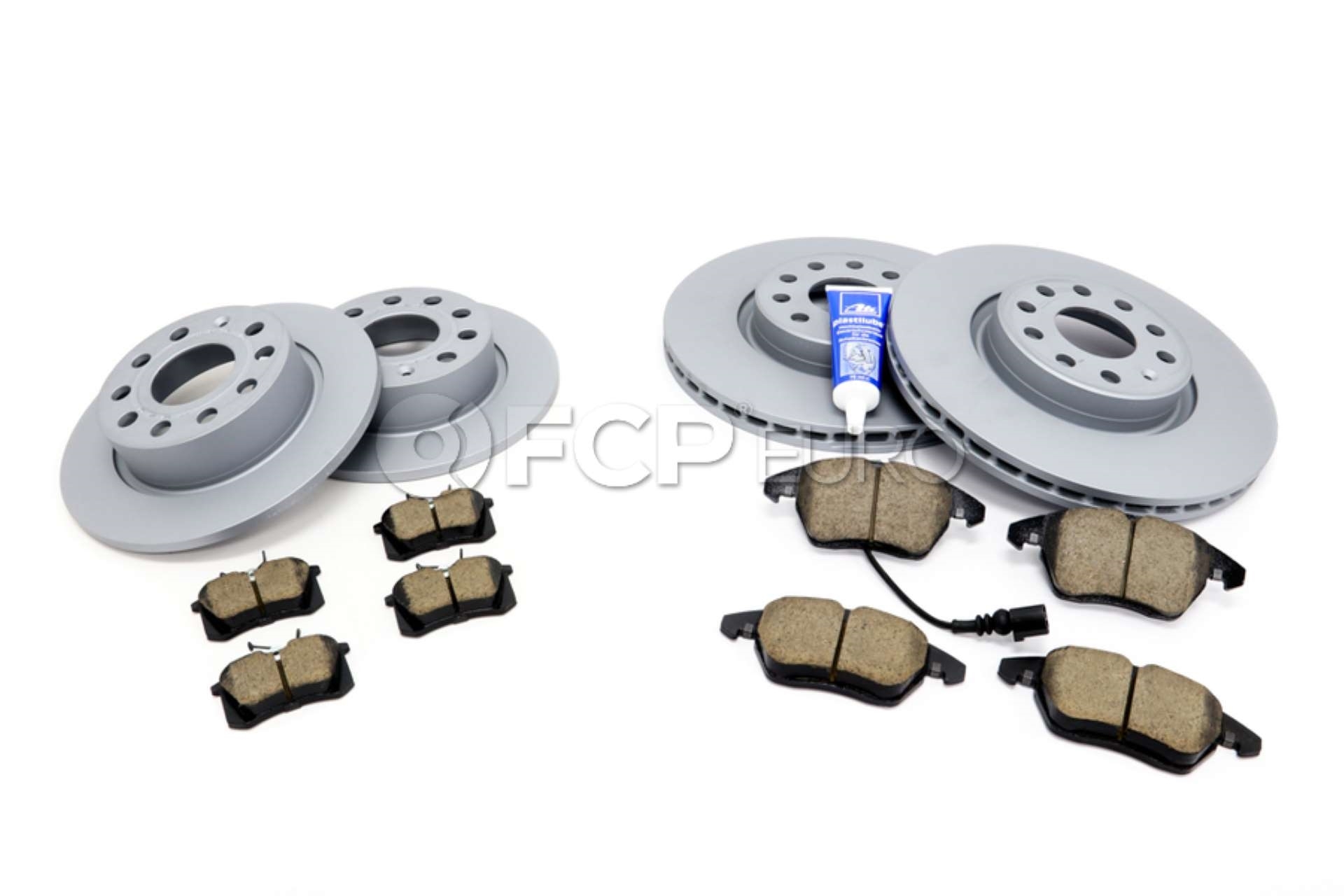
Choosing the right brake pad is the next step in acquiring brake service components. Understanding which pad is right for you can be tricky, although we can help you figure that out. The OE brake pad composition is semi-metallic; good for stopping performance but produces a good amount of brake dust. The other option is something more low-dust but still performance-oriented, like a ceramic compound. Textar and Ate offer pads in both compositions, while Pagid offers strictly semi-metallic. TRW offers pads in an NAO organic compound, similar to semi-metallics, and in ceramic as well. Other aftermarket ceramic pads are available from Bosch and Akebono.
The only other component you’ll likely have to replace is the brake fluid. Pentosin’s Super DOT 4 is a quality replacement for the stock fluid and is a Genuine component in other manufacturers’ vehicles. GLIs seeing autocross or track time should look for a slightly different fluid. Ate TYP 200 offers a higher boiling point from the OE manufacturer at about the same cost as the Genuine fluid.
Mk6 VW GLI Brake Upgrades
The GLI is a performance model, and it can benefit from some performance upgrades when called for. The stock components are perfectly suited for daily driving, offering all of the performance you’d need. However, the pads and rotors won’t take repeated abuse as well as they could. OE-type parts aren’t made to handle consistent laps around the FCP Euro Proving Grounds at Lime Rock Park, but a handful of aftermarket parts will.
The StopTech cryo-treated rotors are the choice for a stock appearance but better performance. The blank rotor faces are the same as the OE rotors, but the rotor’s manufacturing sets it apart. It uses a high-carbon steel construction for much higher tolerance to repeated heavy braking. Then the rotors are cryo-treated and taken down to -300°F in a process that realigns the steel molecules for increased durability in all conditions. EBC is the other performance rotor we offer and is available in two styles. Both the GD Sport and Ultra Quiet Sport Slotted rotors will offer better thermal durability than the OE components while looking a bit better, thanks to the various slots and drilled holes.
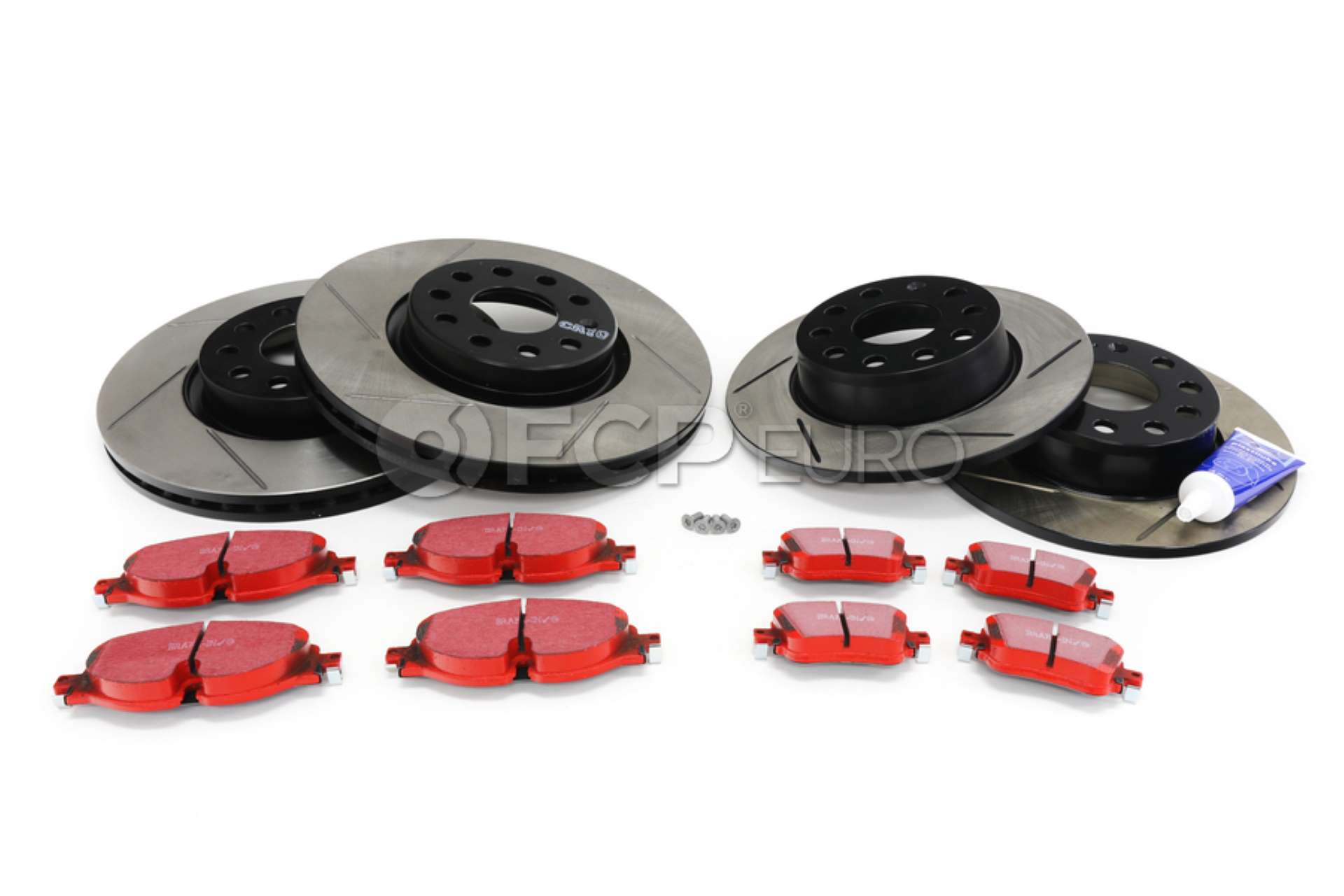
Once you have your rotors picked out, take a look at the pad selection. We carry pads from Hawk, Ferodo, EBC, and Stop Tech with compounds more aggressive than stock, though they aren’t all equal. The StopTech and EBC Redstuff pads are best suited to spirited street driving on the GLI. They offer improved bite characteristics and improved thermal durability to withstand those backroad blasts. The EBC Yellowstuff, Ferodo DS2500, and Hawk HPS pads are a step up in braking performance as they’re true dual-purpose street/track pads. Their composition gives plenty of feel in colder temperatures but has the thermal tolerances to get you to and around the track with killer braking performance. With that performance comes a balance, though. Dust and noise levels will be significantly higher with the more aggressive pads.
If you’re going through minimal trouble to fit higher performance parts in anticipation of light track duty or similar, then you may as well round out the improvements with a set of braided brake lines. The standard rubber lines are fine for road driving but can expand under pressure during repeated abuse and higher temperatures. Replacing the lines with those wrapped in a stainless-steel braid will prevent any of those issues and ensure a firm and consistent brake pedal as long as the brakes haven’t overheated. To help with the heat, you should look into some better brake fluid, too. Motul’s RBF 600 or RBF 660 are great mid-priced options that’ll deliver the consistency needed on the track.
Mk6 VW GLI Big Brake Kits
The stock brakes do well on a lightly modified chassis with better pads. However, power-adding modifications mean higher closing speeds and a greater need for balance in the braking department. While stopping distance and braking performance are determined by tires and brake pads, switching to a physically larger set of brakes has its benefits. The larger the pad and rotor surface area, the more abuse the brakes can handle over a lapping session.
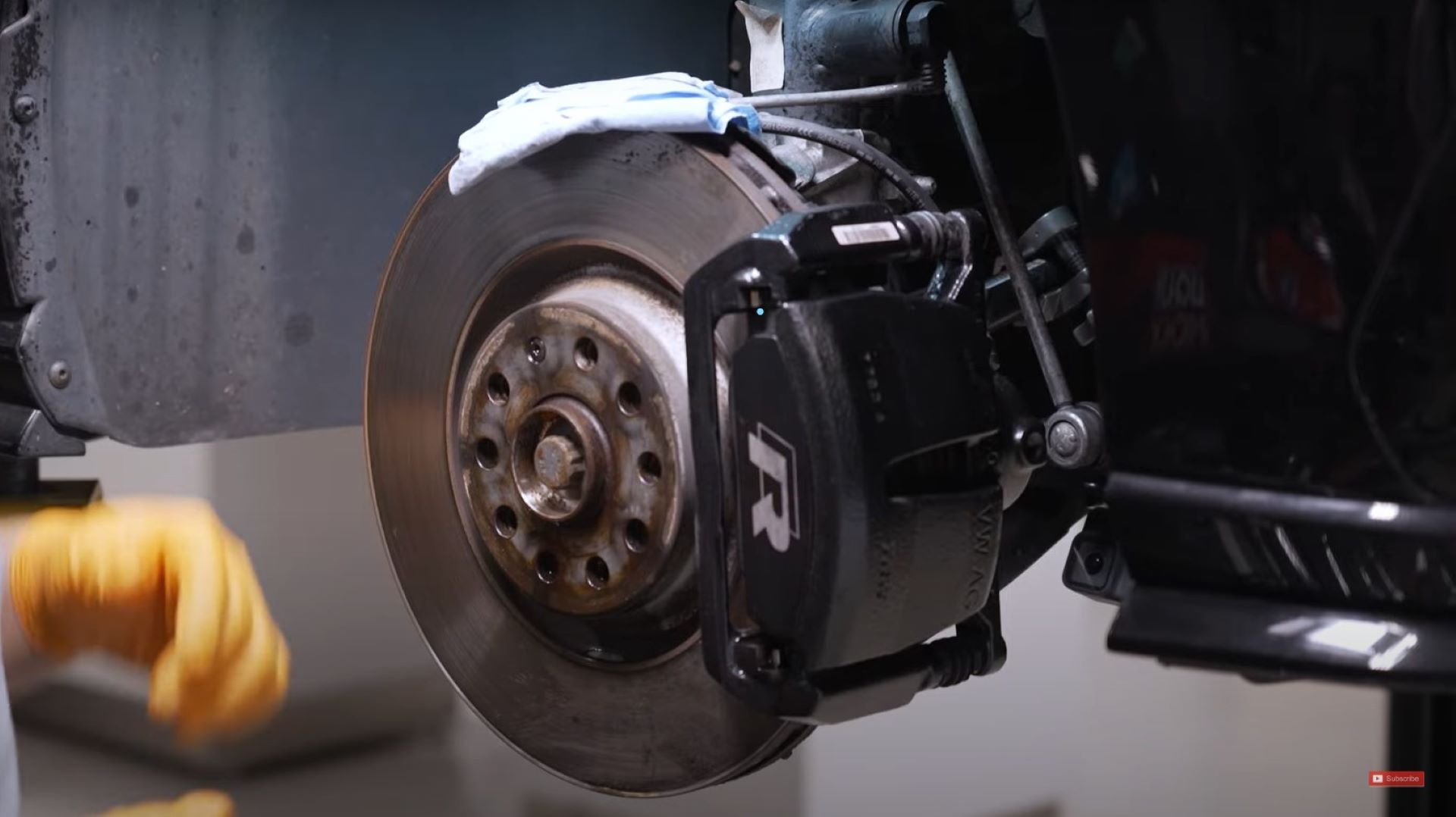
Being connected to Audi and Porsche, VW products have a friendly upgrade path. The simplest way to improve braking performance through size is with the GTI’s Performance Pack brakes. They’re the same size as those fitted to the Golf R, measuring 340mm up front and 310mm at the back. Pairing them with a Ferodo DS2500 or EBC Yellowstuff pad would blow the calipers off the GLI’s stock brakes. There’s also a greater offering of aftermarket rotors and pads for those brakes. If that isn’t fancy enough, then we’d recommend getting your hands on a set of front discs from the Europe-only GTI Clubsport. They’re a dual-cast design, using an aluminum bell with a steel rotor ring for a 2lb weight reduction per disc.
Stepping up from that brings another VAG upgrade into the fold. The Audi (8J) TT RS is an incredibly capable machine with sporting qualities on par with Porsche’s Cayman. On the TT RS’s front axle are a pair of fixed, four-piston calipers clamping down over 370mm rotors with the same construction as the GTI Clubsport’s pair. The shared platforms between VW and Audi mean those TT RS calipers and rotors will bolt onto the front of your Mk6 GLI as long as it wears 18” wheels. As factory parts go, it doesn’t get any better.
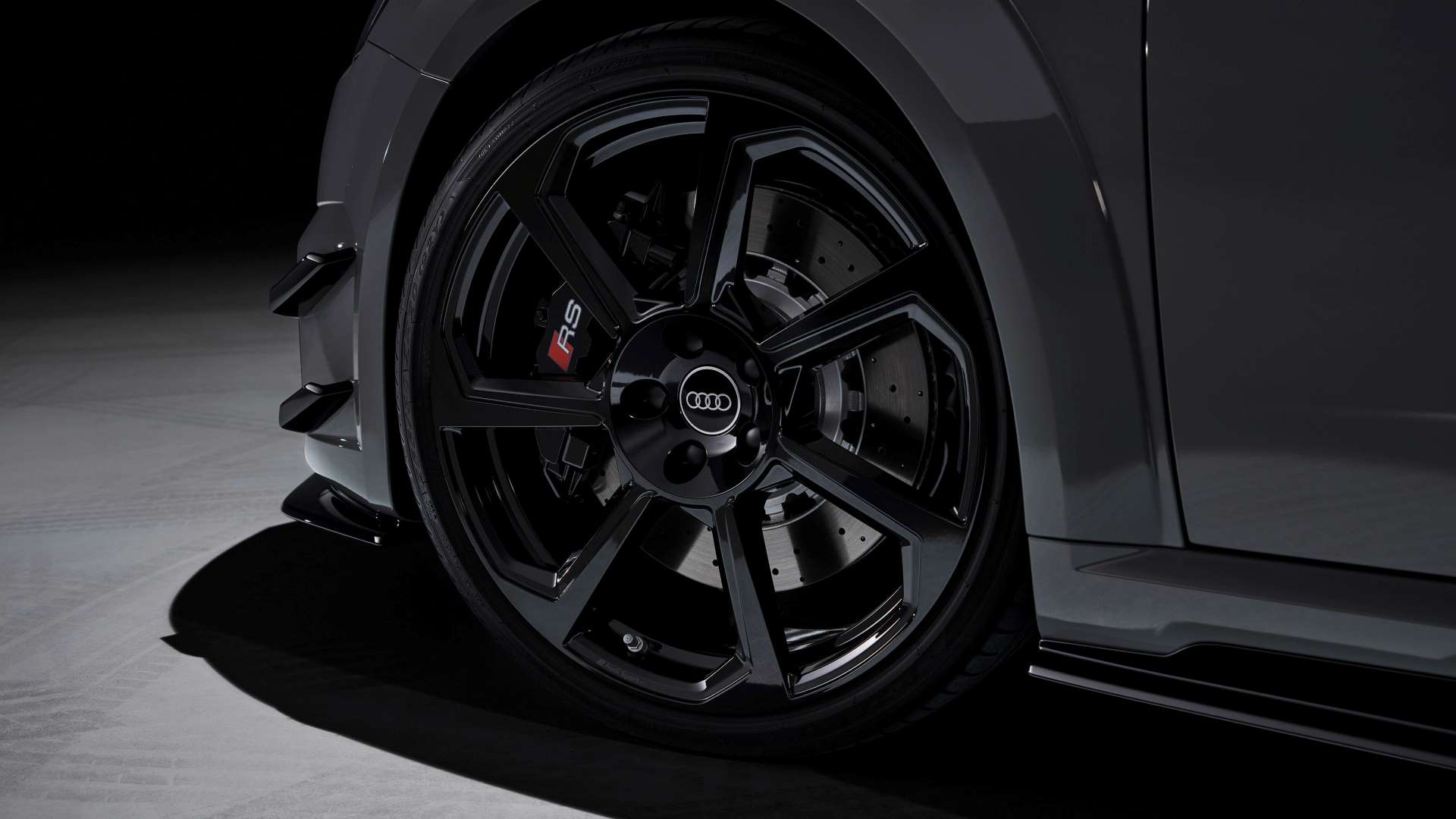
Of course, there are plenty of aftermarket options if you’d prefer. Big names like Brembo, AP Racing, Stop Tech, and Wilwood all offer big brake kits with varying calipers in various sizes. The smallest of the lot is the 328mm StopTech kit, while the 365mm Brembo kit is the biggest of the range. Other companies like APR, Neuspeed, and Tarox also offer big brake kits within that size range, though they certainly don’t carry the respect that the others do.
Mk6 VW GLI Brake Torque Specs
Front
- Rotor set screw: 3 ft-lb (4 N m)
- Brake caliper carrier to spindle - 148 ft-lb (200 N m) (Clean if reusing)
- Brake caliper to carrier sliders - 26 ft-lb (35 N m) (replace)
Rear:
- Rotor set screw: 3 ft-lb (4 N m)
- Brake caliper carrier to spindle - 66 ft-lb (90 N m) + 90 (replace)
- Brake caliper to carrier sliders - 26 ft-lb (35 N m) (replace)
With those torque specs, you’re all set to handle any brake service job yourself. Hopefully, we’ve covered all your questions regarding the GLI and its brakes, but if we haven’t, please leave them for us in the comments below. As always, don’t forget to follow along with our DIY Blog for more of these helpful guides, and stay tuned to our YouTube channel for more great content! Let us know in the comments below if you have any questions or concerns. Happy wrenching!

